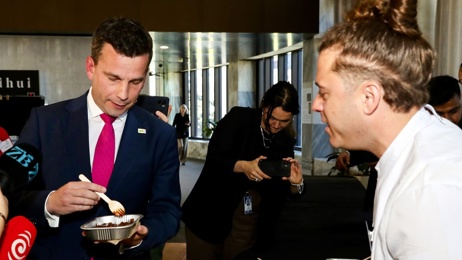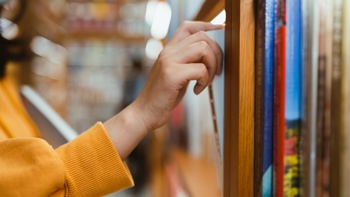
Scientists have been surprised to find microplastics deep in a “pristine” marine reserve tens of kilometres away from the nearest town – raising a crucial need to understand how these harmful particles are building up on our seafloors.
Measuring less than 5mm long – and made up of everything from microbeads and nurdles to clothing fibres and broken-down bottles – microplastics are a macro problem.
Now one of the planet’s most pervasive pollutants, microplastics are being found in the planet’s most remote and cleanest waters - as well as in our air, rainwater and food chain.
Still, researchers were recently taken aback to find there were greater concentrations of them around a Marlborough marine protected area than in the closest urban waters.
Their findings, just published in the scientific journal Continental Shelf Research, shed much-needed light on how the scourge has made its way to the depths of our oceans.
It marked the first study to quantify microplastics in our country’s open ocean – and the first to isolate and assess the make-up of those found beneath local seabeds.
“In the last few decades, many studies have reported presence of marine microplastic pollution in Aotearoa-New Zealand, but these have been limited to rivers, coastal and intertidal zones,” said the study’s leader, Dr Marta Ribó of Auckland University of Technology.
“There’s still a knowledge gap on how much microplastic is transported into deep-marine environments and ultimately accumulating in the ocean floor.”
/cloudfront-ap-southeast-2.images.arcpublishing.com/nzme/HDMT4KQQ7VHUVJQPSPSPQ52CKQ.jpg)
This image shows some of the microplastics discovered in the seabed of Marlborough's Long Island-Kokomohua Marine Reserve. Image / Marta Ribó
Initially, Ribó and her colleagues suspected that when microplastics entered the ocean, currents began moving them around like sediment particles.
“Our first hypothesis was that the concentration of microplastics would decrease with distance from urbanised areas, assuming these are the main sources of plastic pollution,” she said.
“Thus, we were expecting that we would find higher concentrations of microplastics closer to the coastal settlements than further offshore - especially in a marine protected area, which one would expect to be a pristine area.”
In July 2020, Ribó and fellow researchers, including Niwa’s Dr Sally Watson were working just outside the Long Island-Kokomohua Marine Reserve, near the mouth of the Queen Charlotte Sound, about 30km from Picton.
Aboard Niwa research vessel RV Ikatere, they used a corer to retrieve sediment samples from up to a metre beneath the seafloor, in waters ranging from 30m to 70m deep.
Within the samples, they later discovered a multi-coloured assortment of pellets, fragments and fibres.
Closer to Picton, sampling turned up microplastics that’d accumulated vertically on the seafloor, as had been expected.
“However, we found a spike of microplastic particles at around 40cm below the seafloor, in the sediment, in the marine reserve area.”
Just why that was remained unclear.
/cloudfront-ap-southeast-2.images.arcpublishing.com/nzme/IN4JRPO57FDKLKNY2OWEICUENU.jpg)
Aboard the Niwa research vessel RV Ikatere in July 2020, a team of scientists sampled microplastics in the seabed near the Long Island-Kokomohua Marine Reserve, near the entrance to Queen Charlotte Sound.
Ribó said it might have resulted from ocean species having helped transport the particles down into the seabed, from storms shifting them on to the seafloor in sediment beds – or simply having been built up over years and decades of pollution.
Either way, she said the study raised a need for built-up microplastics to be considered when monitoring the effectiveness of marine protected areas – particularly given they could hinder the ability of reserves to take up carbon.
The research, commissioned by the Marlborough District Council and designed in partnership with Te Ātiawa o Te Waka-a-Māui Trust, also posed an obvious problem for those species that reserves had been set up to shelter.
In the Hauraki Gulf, studies have detected microplastics in the guts and muscle tissue of several species of caught fish – and it was recently estimated whales were consuming around three million of these particles each day.
“With the growing threat of plastic pollution in the marine environment, affecting biodiversity, ecosystem functioning - and ultimately human well-being - it is crucial to assess the accumulation of microplastic particles in the seafloor.”
Jamie Morton is a specialist in science and environmental reporting. He joined the Herald in 2011 and writes about everything from conservation and climate change to natural hazards and new technology.
Take your Radio, Podcasts and Music with you









